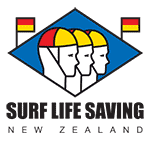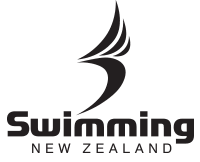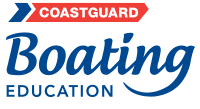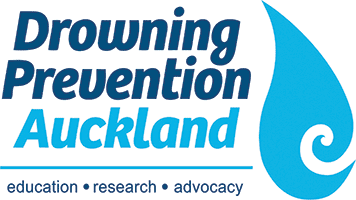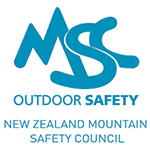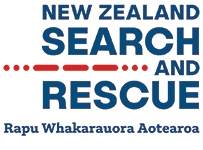APPENDIX 3
What is new in the 2025 Strategy?
A broader focus and wider consultation
To help us ensure the preventable drowning toll in Aotearoa New Zealand is reducing, and that we are building towards our vision, the water safety sector must be collaborative, share information and resources, and have common strategic areas of focus which will enable us to work together to implement our action plan.
During the development of this refreshed sector strategy, there was significant consultation across the sector1. Feedback received was that much of the previous strategy’s intent remains valid – the vision, mission and outcomes of the 2020 sector strategy were still considered well founded, as were many of the strategic actions and challenges faced by the sector from the previous strategy.
However, for this next iteration, it was agreed that a broader water safety focus was needed as opposed to the narrower drowning prevention focus.
Water safety refers to the procedures, precautions and policies associated with safety in, on, and around bodies of water, where there is a risk of injury or drowning.
Drowning prevention is the interventions and strategies delivered through programmes to national and local communities.
There was strong consultation feedback that the vision and mission should be restated with positive wording although still retain the underlying intent that “no one drowns”.
The Wai Puna model is new to the 2025 strategy and highlights the water safety sector working towards true partnership with Māori. Wai Puna is a theory of Māori water safety and health developed by Dr Chanel Phillips (Ngāti Hine, Ngāpuhi), co-director of Te Koronga Indigenous Science Research Theme and lecturer at the School of Physical Education, Sport and Exercise Sciences at the University of Otago. Dr Phillips' work in this area culminated in her PhD entitled A Journey to Belonging: Explorations of Māori Perspectives of Water Safety which analysed Māori oral narratives such as pūrākau (creation stories), mōteatea (chants), karakia (incantations), whakataukī (proverbs) and pepeha (tribal aphorisms) to better understand water safety and drowning prevention from a Māori perspective and help reduce the high drowning rate of Māori in Aotearoa. Dr Phillips employed interface research examining the intersection between Māori and Western notions of water safety reflecting the importance of a strengthened connection to, and respect for, water that can lead to the provision of more purposeful drowning prevention for all New Zealanders.
Five strategic areas of focus
Five strategic areas of focus have been explicitly stated in this iteration of the strategy. These areas of focus are considered by the sector as the key “pillars”, with each playing a significant role in the achievement of the targets of the sector.
Sector measures and dashboards for the areas of focus
Desired trends, indicators and targets have been set against each of the three sector outcomes. Detailed dashboard measures will be developed against each action in the monitoring and evaluation framework relating to each of the five areas of focus. This will provide high level assurance that the implementation of the action plan behind the strategy, is moving the water safety sector in the direction of our overall desired outcomes.
An action plan and implementation plan
An action plan has been developed for the 2025 strategy and has been agreed for the next 5-year period. Each action explicitly relates to one of the five strategic areas of focus. Water Safety New Zealand will be responsible for leading the implementation of the Water Safety Sector Strategy 2025. It will undertake this role in consultation with Cross Sector Reference Group and with the support of sector organisations. The implementation plan will be closely monitored and updated by Water Safety New Zealand.
A monitoring and evaluation framework
A sector wide monitoring and evaluation framework will be developed to inform progress with the strategy, and report on the expected outcomes each year. This will fulfill the statement of service performance reporting obligations with sector funders, and the individual organisation’s evaluation of their own involvement working towards the sector’s strategic goals. This continual process of monitoring and evaluation will determine how we are progressing and enable the action plan to be reviewed and amended annually where appropriate.
Development of the sector Knowledge Hub and consideration of data and research gaps
A key focus of this iteration of the Water Safety Sector Strategy will be the development of a water safety sector Knowledge Hub led by Water Safety New Zealand. We will aim to expand data capture and use, establish data hygiene, sharing, management, privacy, data sovereignty, and ethical use of data.
A repository of Aotearoa New Zealand and international research on drowning prevention, water safety and water competency will be developed so that information is collected at a single point and is easily accessed and disseminated. This centralised data and research will include distilling and disseminating the best available evidence from research, practice and experience. It will then be used to better inform decision-making and to develop evidenced-based insights and to improve policy, and action water safety interventions.
Alongside the development of the Knowledge Hub, work will be undertaken to highlight data and research gaps relating to water safety and drowning prevention. Improving drowning and water related hospitalisation data across countries has been identified by the World Health Organisation as a key strategy to better understand the full extent and circumstances of drowning, to target interventions and evaluate their effectiveness. [2]
Further work in Aotearoa New Zealand is required to validate water related incidents, injury and hospitalisation data, so that we can ensure that the information gathered is reliable and consistent.
There are a number of areas where drowning prevention research is currently being undertaken in Aotearoa New Zealand. Further understanding is required regarding the impact of alcohol and drugs on the drowning and non-fatal drowning statistics. We also need to be conscious about factors that may affect us that are imminent, and the possible impacts they might have on our society (and statistics). With the development of the Knowledge Hub, these areas of potential research will be prioritised so the sector is kept abreast of future trends.
COVID-19, immediate and ongoing impacts
The COVID-19 pandemic continues to cause widespread economic and social disruption around the world. At the time of writing, infection rates are still rising in many parts of the world and the timeline for the vaccination of the population is still some months off. The crisis has caused the biggest contraction in the global economy since records began, with a flow on effect in New Zealand of the disappearance of tourism revenues, minimal immigration, and national restrictions to movement due to lockdown measures. All these factors, along with slower population growth, an ageing population and more workers retiring than entering the workforce, will influence our population’s demographics, and may give rise to increased uncertainty and increased inequality.
Aotearoa New Zealand is generally regarded as a country with a high level of social cohesion, given our considerable diversity; but underlying vulnerabilities and issues remain that are yet to be fully addressed2. The COVID-19 crisis has brought into stark relief the position of those who were already in social and economic difficulties. There is likely to be a disproportionate impact on the most vulnerable segments of society, with the likelihood that existing inequality will worsen. [3]
New Zealand’s early elimination strategy has resulted in a much lower prevalence of COVID-19 compared to many other countries. The recovery from the initial downturn has been swift, despite the return to higher alert levels during August and September. In line with the stronger domestic recovery, the unemployment rate is forecast to peak at 6.9% by the end of 2021, compared to the 7.8% forecast in the September 2020 Pre-Election Update. In comparison the unemployment rate peaked at 6.6% during the Global Financial Crisis.
Those already vulnerable are expected to bear the brunt of the rise in unemployment in 2021. With the anticipated increase in jobless over the next year, we are expecting to see a rise in the number of families supporting themselves by kai/food gathering in our waterways. This may well lead to increased drownings or hospitalisations and is an area that the sector needs to be monitoring closely.
Alert levels 3 and 4, and the associated restriction to movement, resulted in a significant reduction in the number drowning. This will distort our 2020 statistics and five-year rolling averages for some time.
DrownBase™ data methodology
The data and infographics presented in the New Zealand Water Safety Sector Strategy 2025 are drawn from Water Safety New Zealand’s DrownBase™ and the online Water Safety New Zealand provisional Drowning Report 20203.
DrownBase™ is the official integrated drowning database of Water Safety New Zealand. It was developed in 1994 to maintain details of all drownings (mortality and morbidity) that have occurred in Aotearoa New Zealand waterways since 1st January 1980. The database is a vital tool for the New Zealand water safety sector and is considered integral to the evidence base by allowing analysis of drowning data to provide targeted programmes and initiatives, improve funding decisions, target advocacy and develop research. New Zealand’s Drownbase™ is considered to be world leading and to have one of the three best “unintentional drowning” databases in the world alongside Australia and Canada. [4]
The success of Drownbase™ is due to the partnership between Water Safety New Zealand, New Zealand Police, the Coronial Services of the Ministry of Justice and the New Zealand Health Information Service. All care is taken to ensure that the information in DrownBase ™ is as accurate as possible. Please note, however, that figures may change depending on the outcome of coronial investigations. At any point in time there may be several deaths which have been referred to the coroner, with ongoing coronial investigations. It is more likely to affect more recent years’ data as this is where investigations are still likely to be underway4.
Drowning rates per 100,000 people are calculated using population data from Statistics New Zealand publications. Percentages and averages are presented as whole numbers and have been rounded up or down accordingly.
The data presented in this document relates to preventable drownings. Preventable fatalities include recreational and non-recreational drowning deaths. It excludes drowning deaths as a result of road or air vehicle accidents, suicides or homicides, or deaths from natural or unknown causes.
Non-fatal drowning – the impact on individuals, families, and society
The World Health Organisation defines drowning as “… the process of experiencing respiratory impairment from submersion/immersion in liquid”. [5] Outcomes are classified as death, morbidity and no morbidity. Morbidity is defined as a decline from the individual’s functional capacity prior to the drowning.
There has however, been a limited consensus of a definition for non-fatal drowning which often result in hospitalisations. This has given rise to data inconsistencies which have hindered research efforts and underestimates the burden of non-fatal drowning on society. In order to improve and provide more comprehensive reporting, an international working group was formed in 2017. The outcome of the working group was to provide a definition and categorisation for non-fatal drowning. [6]
The impact of non-fatal drowning may be catastrophic for an individual, where they may suffer long term neurological impairments. There is also the significant ongoing impact on the individual’s family, society, hospitals and the wider health sector. As part of the 2025 strategy, Water Safety New Zealand will facilitate working with organisations to strengthen the consistent reporting of water related incidents, injury and non-fatal drowning hospitalisation data. This will give the sector confidence in the data being reported, allow us to target interventions to reduce water related injury and hospitalisations, and, as a result, reduce the burden on individuals, families and society.
Drowning hospitalisation numbers are increasing year on year in New Zealand. 943 people have been hospitalised over the 5 year period5 from 2015-2019 for non-fatal drowning, compared to 408 preventable drowning deaths over the same period. This identifies a preventable drowning death to survival ratio of 1: 2.31 fatal to non-fatal drownings. We may well find that with the increased funding received in 2020 for frontline rescue, that fatalities track down with more and quicker rescues but that hospitalisations continue to track up for some time to come. A close watch on the drowning death to survival ratio will be necessary.
Further understanding of the impact of non-fatal drowning in New Zealand is needed. Non-fatal drowning and hospitalisations have been identified as a gap in research and one where we need to improve our knowledge and goal setting.
1 See Appendix 1: Design and development of the 2025 Strategy
2 Half Year Economic and Fiscal Update 2020 – 16th December 2020 – The Treasury https://www.treasury.govt.nz/system/files/2020-12/hyefu20.pdf
3 https://watersafety.org.nz/2020-Report-Provisional
4 Water Safety New Zealand (WSNZ) gives no warranty as to the correctness of the information or the data provided as it is supplied to WSNZ by third parties not under its control. While WSNZ is satisfied as to its accuracy for the purposes for which it is supplied to it, WSNZ shall not be liable for any loss or damage
5 Water Safety New Zealand. DrownBase™
